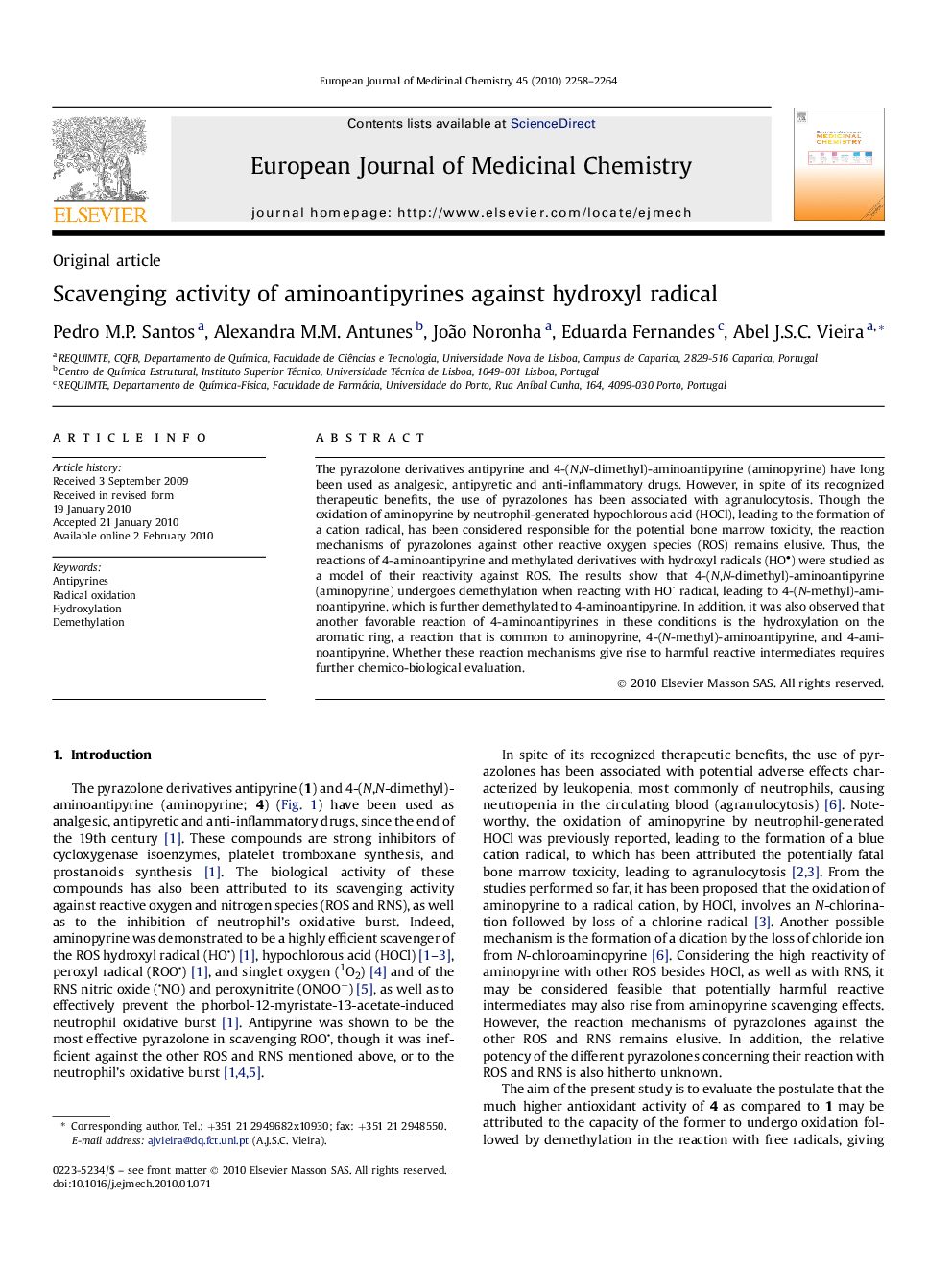| Article ID | Journal | Published Year | Pages | File Type |
|---|---|---|---|---|
| 1397714 | European Journal of Medicinal Chemistry | 2010 | 7 Pages |
The pyrazolone derivatives antipyrine and 4-(N,N-dimethyl)-aminoantipyrine (aminopyrine) have long been used as analgesic, antipyretic and anti-inflammatory drugs. However, in spite of its recognized therapeutic benefits, the use of pyrazolones has been associated with agranulocytosis. Though the oxidation of aminopyrine by neutrophil-generated hypochlorous acid (HOCl), leading to the formation of a cation radical, has been considered responsible for the potential bone marrow toxicity, the reaction mechanisms of pyrazolones against other reactive oxygen species (ROS) remains elusive. Thus, the reactions of 4-aminoantipyrine and methylated derivatives with hydroxyl radicals (HO•) were studied as a model of their reactivity against ROS. The results show that 4-(N,N-dimethyl)-aminoantipyrine (aminopyrine) undergoes demethylation when reacting with HO· radical, leading to 4-(N-methyl)-aminoantipyrine, which is further demethylated to 4-aminoantipyrine. In addition, it was also observed that another favorable reaction of 4-aminoantipyrines in these conditions is the hydroxylation on the aromatic ring, a reaction that is common to aminopyrine, 4-(N-methyl)-aminoantipyrine, and 4-aminoantipyrine. Whether these reaction mechanisms give rise to harmful reactive intermediates requires further chemico-biological evaluation.
Graphical abstractFigure optionsDownload full-size imageDownload as PowerPoint slide
